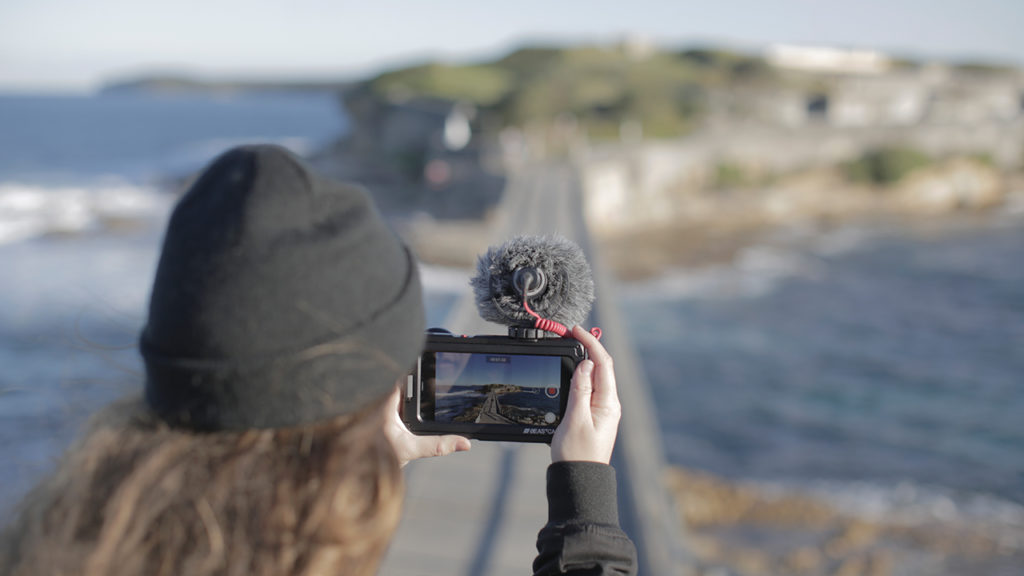When shooting outside, filmmakers face a number of challenges that simply don’t exist indoors. One of these is combatting the elements, with wind noise being one of the main culprits behind a difficult shoot.
What Causes Wind Noise?
Simply put, microphones do not play nicely with strong air movement from any source, be it a breathy vocalist or tempestuous weather. Mics are extremely responsive to the movement of air. They are designed to convert acoustical energy into an audio signal via a diaphragm that vibrates when it is hit by sound waves. And because the human voice – and other sound sources that mics are designed to pick up – outputs a relatively low amount of acoustical energy, this diaphragm is very sensitive.
Wind, by comparison, creates a significant amount of air movement, causing a large amount of low-end frequency vibration in the diaphragm (this is important to note when attempting to tame wind noise in post-production). This intense vibration is often heard as a violent rumble in recordings, which is pretty unpleasant to listen to. So, how do you fix it?
Different Types of Mics and How They Respond to Wind Noise
Generally speaking, omnidirectional microphones perform better at reducing wind noise, plosives, and other harsh sound sources. The diaphragms in omnis are generally more robust than directional mics, meaning they are less sensitive to the pressure created by wind. This is why most lav mics and headset mics (such as the one in the Wireless GO or our HS2) feature omnidirectional mics, and one of the reasons that directional mics like shotguns require some kind of diffusion to reduce wind noise.
That being said, omnidirectional mics are not ideal in many shooting situations. Directional microphones are the go-to video microphones because they reject sound from the sides while focusing on the sound source that they are pointed at. They also have a better range than omnis, meaning you can be further from the sound source and still get clear audio. Unless you are shooting something where you need to capture audio all directions (or are using a lav mic) shotgun mics are the way to go. Which brings us to…
Ways to Reduce Wind Noise When Shooting Outdoors

Windshields
Foam windshields are usually the first line of defence against wind noise. An open cell foam cover around the microphone will disperse and diminish the acoustical energy of the wind hitting the mic capsule, reducing that low-end vibration. These need to be streamlined so that the wind flows around it rather than into it. The snugger, the better. Most of our video mics come with a high-quality windshield.
Deadcats
Foam windshields are effective at curtailing small amounts of wind, but if you are shooting in a particularly windy environment, you may need an extra level of protection. A deadcat is an artificial fur windshield that is designed to reduce noise in high wind conditions, while remaining acoustically transparent.
These work in a similar way to open cell foam in that they absorb the energy of the wind hitting the microphone capsule. The higher density of these furry friends provides even greater protection against wind noise. It should be noted here that denser materials can also affect the audio hitting the capsule in a negative way, usually by attenuating higher frequencies. So if you are using a furry, you may need to account for this by slightly boosting them in post-production.
Blimps
Blimps (or ‘zeppelins’) are large, tubular windshields that completely surround a microphone, providing even greater protection against wind noise. They incorporate a deadcat and shock mounting system and can be attached to a handheld grip or boompole for easy maneuverability.

Take Cover
If you are on location and are struggling with wind noise, take a moment to look around for somewhere with a little more cover to shoot. Trees and bushes, walls and fences, buildings and cars can all offer protection against the wind. It may not ideal for your shot, but you may have to make compromises to get great audio.
Concealing Your Mic
This is only really relevant if you are using some kind of lavalier. When clipping the mic to your talent, take a moment to consider how its placement will impact wind noise. Something as simple as clipping the mic inside a shirt pocket rather than the outside of a tie can help. Do some tests prior to a shoot to figure out where you could best place the mic to reduce wind noise, and still get a clear signal.
Block with a Body
Think about where your talent is standing in relation to the wind. If they are wearing a lavalier mic, a slight rotation can help block out a gust.

During production
Applying EQ tools on set is an effective way to tame wind noise before it even hits your recorder. Many microphones incorporate EQ switches for boosting and attenuating certain frequency ranges. Mics used in video production will often feature high pass filters to reduce low frequencies, such as our VideoMic Pro+. Use these to your advantage!
Post-production
Fixing wind noise in post-production should be a last resort – for example, if you couldn’t manage the noise during your shoot and you can’t rerecord the audio. Always do as much as you can on set to get the best result.
Pull your audio into your DAW or video editing software, open up whatever EQ tools you usually use and either manually cut frequencies around the 20Hz to 250Hz range, or apply a high pass filter or low cut to tame those troublesome frequencies.

